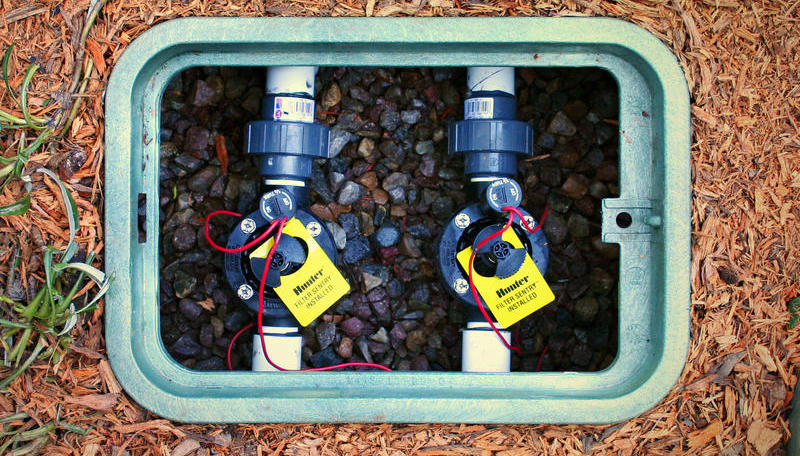- Categories:
- Irrigation

"My valve won't turn on"
- Verify the water is turned on and that the controller is working and is programmed to turn the valve on.
-
Attempt manual operation by opening the bleed screw.
- If the valve opens, go to ELECTRICAL CHECKS.
- If the valve doesn’t open, fully open the flow control stem (turn counterclockwise) and try manual operation by opening the bleed screw once again. If the valve works, then readjust the flow control stem for proper operation and to try to operate the valve at the controller. If the controller doesn’t turn on the valve, go to ELECRICAL CHECKS.
- If the valve still doesn’t open after the above checks, perform the MECHANICAL CHECKS first, and then to ELECTRICAL CHECKS.
ELECTRICAL CHECKS
- Check wire connections. They should be clean and dry. If in doubt, install new waterproof connections and reactivate the valve at the clock.
- Check the solenoid for proper operation with an ohmmeter or devices custom made for irrigation professionals sold at Horizon. The Checkmate 3 and Checker Plus verify proper solenoid operation and have the kick start feature. The Checker Jr. is a kick start device only.
-
Kick-start the valve.
- If the vale opens, the problem is with the controller or the wiring from the controller to the valve.
- If valve doesn’t open, remove the solenoid, and inspect the solenoid chamber and plunger. The plunger needs to move freely inside the chamber. Check the solenoid for opens and shorts using attesting device. If your testing device only has a kick-start, place the solenoid plunger into the solenoid chamber and kick-start the solenoid again. If the solenoid plunger doesn’t pull into the solenoid chamber, the solenoid assembly should be replaced.
- If the solenoid works properly but the valve still won’t open, go to MECHANICAL CHECKS and continue troubleshooting.
MECHANICAL CHECKS
- Check the porting and pathways the valve uses to relieve force from the upper valve chamber. Valves open when water is bled (and force is relieved) from the upper chamber of the valve. Disassemble the valve, and wash parts in a bucket of clean water. Clean any ports, filters, screens, and exhaust pathways using a paperclip and a toothbrush. Check for any missing or damaged parts, or for a torn diaphragm in reverse flow valves.
- If debris was the cause of the valve failure, reassemble and operate the valve.
- If worn or damaged parts are found, either replace the valve or purchase a valve repair kit at your nearest Horizon store.
"My valve won't turn off"
- Do not react by turning the valve off at the flow control stem. This can damage the valve.
- If you just installed the valve – check the location of the solenoid. Most all valve solenoids are located on the non-pressure, outlet side of the water supply. If you installed the valve backwards, reinstall it using the direction arrows on the valve body as a guide, and check for proper function once again.
- Observe the flow characteristics. Determine if the flows and pressures fall in the range recommended by the manufacturer for the valve.
- Perform the following, starting with ELECTRICAL CHECKS.
ELECTRICAL CHECKS
Make sure the controller is not sending current to the valve. You can do this first by visual inspection. A humming, vibrating, or warm solenoid is a good indicator. Either turn off the controller or disconnect the valve wires. If this turns the valve off, inspect your controller and valve wires for proper operation.
MECHANICAL CHECKS
- Find the manual bleed. If it is damaged or open, repair if necessary and restore it to a closed position. This may close the valve.
- Turn off the water and examine the solenoid. It should be hand tight and have a watertight seal. Check for damage to the solenoid O-ring. Check the solenoid plunger and spring. A missing plunger spring and a damaged solenoid plunger seat can prevent a valve from closing. Replacing these missing or damaged parts may close the valve
- Remove the valve bonnet. Examine and wash valve parts in a bucket of clean water. Look for rocks and other debris caught between the diaphragm and the valve seat. Examine the diaphragm, disk seat, and valve seat for wear or damage. Examine and unclog any obstructions in the pressure or inlet port. If worn or damaged parts are found, either replace the valve or purchase a valve repair kit at your nearest Horizon store.
- Reassemble the valve. If you didn’t find any worn or damaged parts, the flow control stem may need to be turned down to prevent the diaphragm from sticking in the up position. Adjust the flow control stem as needed for proper operation.